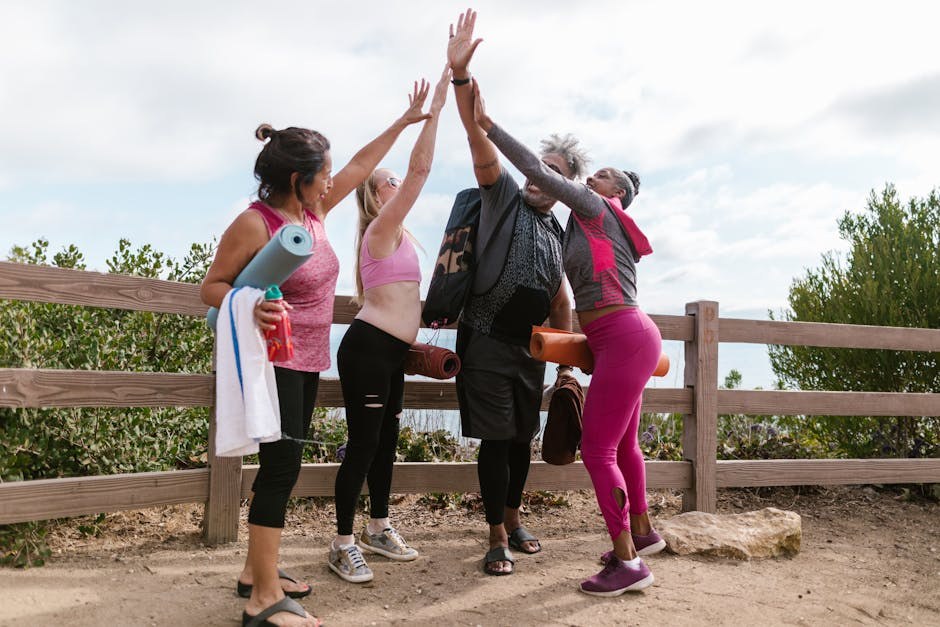Attraction can surprise you – one day, you look across a room and notice a friend in a new light. That spark can feel thrilling and confusing at the same time. What happens next matters far more than the butterflies, because your choices have consequences for trust, dignity, and the friendship itself. This guide is about maturity: how to handle those feelings responsibly, why consent is non-negotiable, and how to protect the friend you value while also being honest with yourself.
Why Ethics Come First
When desire collides with friendship, the path you choose reveals your character. Shortcuts that disregard consent damage people – and once trust is broken, you can’t simply rewind. Choosing an ethical course begins with a basic promise: your friend’s comfort, privacy, and safety matter more than your curiosity. That promise isn’t a mood; it’s a boundary you keep even when your feelings are loud.
Ethics are not a vague vibe. Ethics are choices: you refuse to objectify; you respect digital privacy; you don’t push for details your friend didn’t offer; you avoid situations designed to corner or pressure them. In every scenario, consent is the gate you do not cross unless it’s clear, enthusiastic, and ongoing.

Understanding Consent Beyond a Buzzword
People sometimes treat consent like a line item – a box to tick. It’s not. It’s a living agreement between two people who are both free to say yes or no without fear, guilt, or manipulation. Real consent is informed (both parties know what they’re agreeing to), specific (yes to this doesn’t mean yes to everything), and reversible (anyone can change their mind at any time). If you feel tempted to seek shortcuts, pause and ask yourself why you’re prioritizing impulse over integrity. If it’s not grounded in mutual consent , it doesn’t belong in your friendship.
Attraction Is Not a Mandate
Feeling drawn to someone does not entitle you to their body, their time, or their private life. Attraction is a signal – not a license. The mature response is to acknowledge the feeling, then decide how to act in a way that honors consent and the history you share. If that means doing nothing for now, that’s still an action – a choice to protect the trust you both rely on.
How to Navigate Your Feelings Without Crossing Lines
Start with self-reflection. Sit with the feeling before you speak. What are you actually seeking – validation, intimacy, novelty? Would acting on it risk the friendship? If your interest is mainly about curiosity, that’s a sign to let it pass. Self-reflection is the first safeguard for consent because it stops you from turning feelings into pressure.

Separate fantasy from reality. Imagining scenarios is human. Acting without consent is not. Draw a clean border between private thoughts and public behavior. If your mind drifts toward invasive ideas, respond with a grounded reminder: “This person trusts me.” That sentence helps your brain reroute desire into respect.
Regulate the environment. Don’t engineer situations where your friend could feel cornered – late-night one-on-ones when they’re tired, alcohol-heavy hangouts, or setups that undercut their ability to freely decline. A space that supports clear consent is unpressured: people can leave, say no, or change the subject without social penalty.
Mind your eyes, your jokes, and your timing. Staring, suggestive jokes, and “accidental” innuendo are not neutral – they accumulate. If you care about consent , you care about how your presence feels. When in doubt, pick language that’s straightforward and kind, not coy and boundary-testing.

Digital Privacy Is Part of Consent
Phones and laptops carry fragments of people’s lives – conversations, photos, health data, insecurities. Respecting consent means treating devices like locked rooms even if they’re left on the table. You don’t read over shoulders, you don’t snoop in galleries, you don’t scan notifications. If a friend hands you their phone to show a picture, you view that picture – not the rest of their camera roll. That restraint is a daily practice of consent in action.
Alcohol, Substances, and Power Dynamics
Consent requires a clear mind and equal footing. If either of you is intoxicated, tired, or emotionally raw, that’s not a green light – it’s a flashing red. The same goes for power dynamics: age differences, seniority at work, social capital, or financial dependence can all skew a friend’s sense of freedom. If you truly value consent , you only proceed when any unevenness has been named and neutralized – and the easier choice is to wait or walk away.
Speaking Up the Right Way
Silence isn’t always noble – sometimes the most respectful choice is an honest conversation. The key is to speak in a way that centers your friend’s comfort and makes consent practical rather than theoretical.
Ask for a conversation, not an outcome. “Can I share something a bit vulnerable? No pressure to respond the same way.” Framing like this gives permission to say no – which is what consent is for.
Use “I” language. “I’ve noticed I’m developing feelings” is accountable. It avoids pinning responsibility on the other person and keeps consent central by not assuming reciprocity.
Offer easy exits. Build in a graceful off-ramp. “If this is not your thing, I absolutely want to keep our friendship solid.” An exit makes consent safe to exercise – there’s no hidden penalty.
Stay specific and slow. Don’t escalate from “I like you” to grand proposals in minutes. Consent thrives when decisions can be small and reversible: a low-key coffee, a check-in after, and permission to pause whenever needed.
Reading Responses Without Wishful Thinking
When you lead with consent , you pay attention to content and tone. A warm smile with a firm “I’m flattered, but I’d rather stay friends” is still a no. Respect it without debate. Don’t bargain, don’t “prove” yourself, and don’t set calendar reminders to try again next month. Accepting a boundary is the clearest way to show your friend that their autonomy is real.
What Healthy Progress Looks Like If Interest Is Mutual
Sometimes, the timing and interest align. If – and only if – your friend expresses clear interest, you can co-create something new. The hallmark of respectful beginnings is continuity of consent : you check in, you set pace together, and you remember that comfort can fluctuate.
Agree on labels slowly. Friends-to-more is a delicate bridge. Keep talking. If one of you wants to move slowly, that’s your speed. Ongoing consent means the slower pace wins.
Define boundaries explicitly. Public displays, private time, social media – talk about each. Boundary clarity supports consent because it sets expectations you both actually want.
Build guardrails for the friendship. If the romance stalls, how will you de-escalate kindly? Having a plan respects future consent – it prevents pressure to continue something that no longer fits.
When Feelings Aren’t Returned
Unrequited attraction stings. The ethical response is self-regulation: you don’t retaliate with distance that punishes, and you don’t hover hoping for a slip in their boundaries. Respecting consent often means stepping back, not as a silent protest but as care for yourself and the other person. Sometimes space restores equilibrium; sometimes it reveals that you need to grieve privately and invest in other relationships. Both choices honor consent .
Behaviors to Avoid – Non-Negotiables
There are lines you never cross. These behaviors violate consent , erode trust, and can be unlawful. Refusing them is part of who you are.
Snooping through devices or accounts. Even curiosity doesn’t justify it. Access without permission is a direct breach of consent and privacy.
Coercion disguised as humor. “C’mon, just this once,” or “You owe me,” is pressure. Anything that chips at someone’s “no” is incompatible with consent .
Manufacturing compromising situations. Engineering scenarios where refusal is awkward – shared rooms without warning, limited transportation, closed doors – undermines consent by design.
Trading access for access. Offering your own privacy as barter for theirs still violates consent . Mutual intrusion doesn’t cancel harm.
Using substances to blur decisions. Any plan that relies on lowered inhibitions is an automatic stop. Impaired agreement isn’t consent .
Social Dynamics: Group Settings and Mutual Friends
Friend groups complicate everything. Flirtation in front of others can apply social pressure, which corrodes authentic consent . If you need to talk, do it privately and respectfully. Don’t recruit mutual friends to lobby on your behalf; triangulation puts your friend in a corner and makes a clean “no” feel costly. Keep the circle small and the conversation simple.
Language That Keeps Consent Clear
Words shape safety. Try sentences that make room for autonomy: “If you’re not comfortable, we can drop this,” or “I’m okay with a no, and I mean that.” When they speak, listen without building a counter-argument. The goal is not to win; it’s to make sure consent stays visible, audible, and respected at every turn.
Body Language and the Limits of Assumption
Body language can mislead. A laugh can be politeness; lingering eye contact can be a habit. You don’t infer consent from vibes – you confirm it with words. Asking is not awkward; it’s reassuring. “Is this okay?” or “Do you want to keep going?” are simple questions that anchor the moment in mutuality. If the answer is hesitant, that’s data: slow down or stop. That response is how consent protects everyone.
Taking Care of Yourself While Doing the Right Thing
Ethical restraint can feel heavy. Share your feelings with a trusted confidant who isn’t part of the same friend circle. Journal your thoughts to separate fleeting impulses from deeper needs. Exercise, make art, spend time outdoors – these are not distractions; they’re ways to metabolize energy so you don’t turn restlessness into boundary-testing. Taking care of yourself keeps you aligned with consent when emotions surge.
Rebuilding Equilibrium After an Honest Talk
If you’ve shared your feelings and the answer is no, you’ll need a short phase of recalibration. Establish a routine that reduces friction: meet in public spaces, keep hangouts shorter, and avoid late-night texts until the friendship finds its new balance. Tell your friend you appreciate their honesty and that you’ll match it with respect. This communicates that consent remains your compass, even when you’re disappointed.
If You Move Forward Together, Keep Checking In
Mutual interest is only the beginning. Keep the dialogue alive: “How is this pace for you?” “Do you still want to keep this private?” These check-ins are micro-affirmations of consent . Plan gentle pauses to reassess. Remember that closeness grows from care, not from access; the more you prioritize comfort, the more trust you’ll build.
Friendship Is the Point
Attraction doesn’t have to be the end of the story, but neither is it the whole story. What makes a friendship valuable – the shared jokes, the reliability, the feeling that you’re safe together – should not be collateral damage in pursuit of curiosity. The throughline of this entire guide is simple: treat your friend as a person, not a puzzle, and let consent decide what belongs between you and what stays unshared. Do that consistently, and no matter the outcome, you’ll know you honored both your feelings and their humanity.